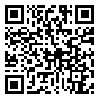Wed, Aug 6, 2025
[Archive]
1- Department of Environmental Sciences, Faculty of Science, University of Zanjan, Zanjan, Iran.
2- Research and Development Unit, Glucosan Company, Alborz Industrial City, Qazvin, Iran.
3- Aran Zino Mahan Company, Zanjan, Iran.
2- Research and Development Unit, Glucosan Company, Alborz Industrial City, Qazvin, Iran.
3- Aran Zino Mahan Company, Zanjan, Iran.
Abstract: (77 Views)
Background: The olive production industry is experiencing rapid growth owing to its health advantages. Nevertheless, a major challenge it encounters is the highly variable wastewater generated from olive oil mills (OMW). To tackle this issue, a range of treatment methods has been adopted, which include physical, thermal, biological, physicochemical, and biophysical treatments, as well as sedimentation, advanced oxidation processes, and combined approaches. This review emphasizes recent studies concerning techniques aimed at eliminating contaminants from OMW.
Methods: This review paper provides an overview of the approaches and technologies used to treat and recover OMW, based on an analysis of 50 peer-reviewed articles published between 2000 and 2025.
Results: OMW is characterized by high concentrations of salts (10 dSm-1), organic matter (130,000-200,000 mgL-1), suspended solids (2170-3480 mgL-1), and particularly phenols (360 mgL-1). It also exhibits high biological oxygen demand (18,000-77,000 mgL-1) and chemical oxygen demand (160,000-180,000 mgL-1). Typically, OMW is dark brown with a foul odor and contains significant amounts of organic and inorganic compounds, such as potassium (2700-7200 mgL-1), phosphorus (300-1100 mgL-1), and lipids (3.0-23 mgL-1).
Conclusion: The complexity of OMW shows that the scientific community has yet to determine a definitive treatment method. Combining technologies such as precipitation, adsorption, advanced oxidation, and membrane filtration has been shown to enhance the treatment of OMW.
Methods: This review paper provides an overview of the approaches and technologies used to treat and recover OMW, based on an analysis of 50 peer-reviewed articles published between 2000 and 2025.
Results: OMW is characterized by high concentrations of salts (10 dSm-1), organic matter (130,000-200,000 mgL-1), suspended solids (2170-3480 mgL-1), and particularly phenols (360 mgL-1). It also exhibits high biological oxygen demand (18,000-77,000 mgL-1) and chemical oxygen demand (160,000-180,000 mgL-1). Typically, OMW is dark brown with a foul odor and contains significant amounts of organic and inorganic compounds, such as potassium (2700-7200 mgL-1), phosphorus (300-1100 mgL-1), and lipids (3.0-23 mgL-1).
Conclusion: The complexity of OMW shows that the scientific community has yet to determine a definitive treatment method. Combining technologies such as precipitation, adsorption, advanced oxidation, and membrane filtration has been shown to enhance the treatment of OMW.
Type of Study: Review Article |
Subject:
Environmental Health, Sciences, and Engineering
Received: 2025/03/6 | Accepted: 2025/06/10 | Published: 2025/07/30
Received: 2025/03/6 | Accepted: 2025/06/10 | Published: 2025/07/30
Send email to the article author
| Rights and permissions | |
 |
This work is licensed under a Creative Commons Attribution-NonCommercial 4.0 International License. |
© 2024 The Author(s)

.png)



